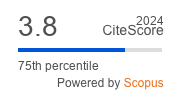Article | Open Access
Social Housing Net-Zero Energy Renovations With Energy Performance Contract: Incorporating Occupants’ Behaviour
| Views: | 2011 | | | Downloads: | 1357 |
Abstract: This article examines how the behaviour of occupants is assessed in a project with ambitious targets for energy use reductions and within the framework of an approach based on an energy performance contract. Its starting point is the observation that there may be significant disparities between the consumption threshold required by the regulations or the labels and the actual building consumption in its post-delivery existence. While behaviour cannot be the only factor explaining this overconsumption, the promoters of high-performance renovation operations often marginalise their importance. The recent surge in requirements for energy consumption reductions in new or renovated buildings in Europe further exacerbates these problems. In light of these challenges, there is a strong demand for compulsory verification of post-delivery performances and for developing energy performance contracts. In this context, the behaviour of a building’s occupants can no longer be considered as a simple adjustment variable. Through the analysis of Energiesprong, a net-zero energy renovation approach for the social housing developed in the Netherlands and in France, built around the principle of an energy performance contract over a long timeframe, the article highlights the injunctions to behavioural changes, the strategies, the negotiations, and the adjustments deployed by the project leaders. It finally shows that there is still a long way to go before the occupant’s behaviour in a high-energy performance renovation project is fully taken into account.
Keywords: Energiesprong; energy performance contract; France; net-zero energy renovation; occupant behaviour; social housing; the Netherlands
Published:
© Margot Pellegrino, Carole Wernert, Angéline Chartier. This is an open access article distributed under the terms of the Creative Commons Attribution 4.0 license (http://creativecommons.org/licenses/by/4.0), which permits any use, distribution, and reproduction of the work without further permission provided the original author(s) and source are credited.


